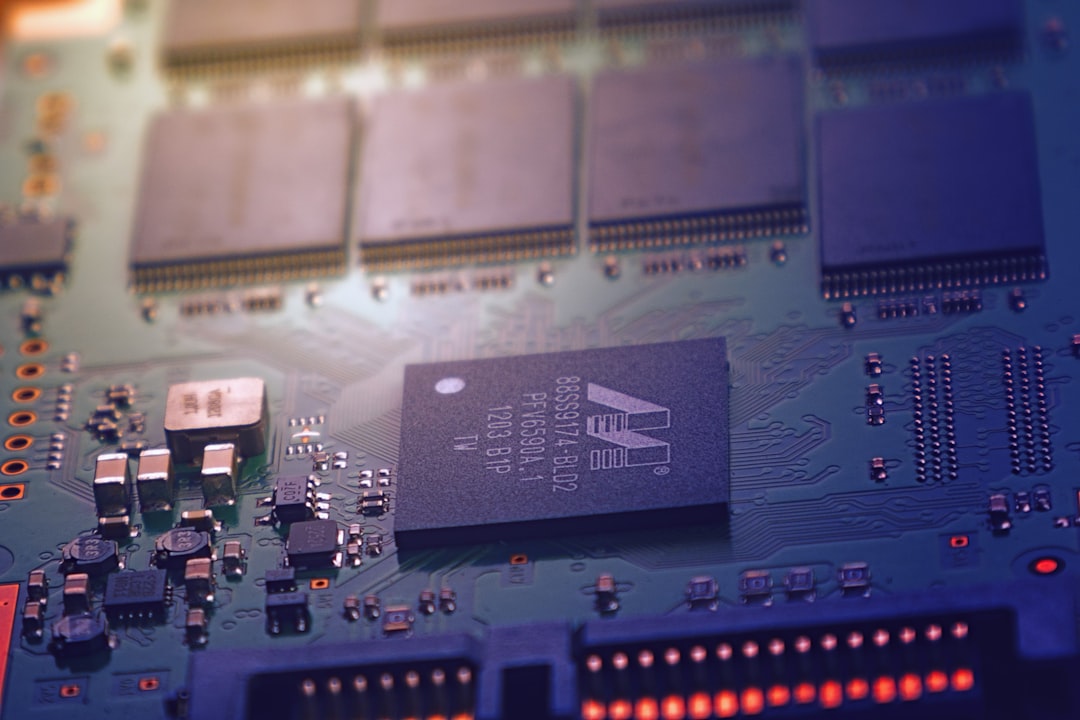Unlock encrypted content
Please enter your SSCE key to initiate on-the-fly decryption.
Decryption key: (Click cancel if you don't have the key)
Copied link to clipboard.
This feature is unavailable for free accounts. Upgrade now and enjoy all Premium benefits.
Go Premium!
This feature is unavailable for free accounts. Upgrade now and enjoy all Premium benefits.
Go Premium!
Please open this page in browser ( Google Chrome or Safari ) to use this feature.
Open In Browser
File Transfer Acceleration: Enhancing Efficiency and Speed
Random related video for this blog.
Copied share link to clipboard.
Whether it's for personal or professional use, individuals and organizations alike are constantly seeking ways to streamline the process of sharing files. With the advent of artificial intelligence and cloud storage, file transfer acceleration has reached new heights, revolutionizing the way we store, access, and collaborate on data. In this article, we will explore the various aspects of file transfer acceleration, ranging from the use of artificial intelligence to the benefits of cloud storage and the future of file collaboration interfaces.
The Power of Artificial Intelligence in File Transfer Acceleration
Artificial intelligence (AI) has emerged as a game-changer in the realm of file transfer acceleration. By harnessing the capabilities of AI, organizations can significantly enhance the speed and efficiency of their file transfer processes. One notable application of AI in this domain is the ability to optimize file transfer protocols based on the specific characteristics of the data being transferred. For instance, AI algorithms can analyze the size, type, and content of a file and determine the most suitable protocol for its transfer. This ensures that files are transferred in the most efficient manner, reducing latency and maximizing bandwidth utilization. Furthermore, AI-powered file transfer acceleration solutions can adapt in real-time to network conditions and dynamically adjust parameters to optimize performance. This is particularly valuable in scenarios where network conditions are variable or prone to congestion. By continuously monitoring network performance and adapting transfer strategies accordingly, AI algorithms can ensure that files are transferred at the highest possible speed, regardless of the prevailing network conditions.Cloud Storage: A Paradigm Shift in File Access and Collaboration
Cloud storage has revolutionized the way we store and access files. With the ability to store data remotely and access it from anywhere with an internet connection, cloud storage has become an indispensable tool for individualsand businesses alike. In the context of file transfer acceleration, cloud storage offers several key advantages. Firstly, cloud storage eliminates the need for physical storage devices, such as hard drives or USBs, which can be prone to loss, damage, or theft. Instead, files are securely stored in data centers managed by cloud storage providers. This not only ensures data integrity but also provides peace of mind, knowing that files are backed up and accessible at all times. Secondly, cloud storage enables efficient backup and recovery processes. Traditional backup methods often involve manual intervention and are prone to errors. With cloud storage, files can be automatically backed up in real-time, ensuring that no data is lost in the event of a hardware failure or other unforeseen circumstances. Additionally, cloud storage providers typically offer robust backup and recovery mechanisms, allowing users to easily restore files to a previous state. Lastly, cloud storage facilitates intuitive file collaboration interfaces. Gone are the days of emailing files back and forth or dealing with version control issues. With cloud storage, multiple users can collaborate on files simultaneously, making real-time edits and updates. This greatly enhances productivity and streamlines the collaboration process, especially for remote teams or individuals working on the same project.
Embracing the Future: Cyberpunk and Genetic Engineering
As technology continues to advance at an unprecedented pace, the future of file transfer acceleration holds exciting possibilities. One intriguing concept that has gained attention in recent years is the idea of uploading the human brain or memory to cloud storage. While this may seem like the stuff of science fiction, advancements in genetic engineering and neurobiology have opened up new avenues for exploration. Imagine a world where memories and experiences can be stored, accessed, and shared digitally. This could have profound implications for personal and collective knowledge, education, and even entertainment. Individuals could upload their memories to cloud storage, allowing future generations to learn from their experiences. Scientists could analyze large datasets of human memories to gain insights into cognitive processes and develop new treatments for neurological disorders. The possibilities are limitless, and while we may be far from achieving such a reality, the rapid pace of technological advancements suggests that it may not be as far-fetched as it seems. Conclusion File transfer acceleration, driven by artificial intelligence and cloud storage, has transformed the way we store, access, and collaborate on files. The power of AI algorithms in optimizing transfer protocols and adapting to network conditions ensures efficient and speedy file transfers. Cloud storage, with its remote accessibility and robust backup mechanisms, offers a secure and intuitive platform for file storage and collaboration. Looking forward, the convergence of cyberpunk concepts and genetic engineering opens up exciting possibilities for the future of file transfer acceleration, hinting at a world where our memories and experiences can be shared and accessed digitally.Frequently Asked Questions (FAQs)
Question: What is file transfer acceleration? Answer:
File transfer acceleration refers to the process of optimizing the speed and efficiency of file transfers, often through the use of artificial intelligence algorithms and cloud storage.
Question: How does artificial intelligence improve file transfer acceleration? Answer:
Artificial intelligence algorithms can analyze file characteristics and network conditions in real-time, optimizing transfer protocols and adjusting parameters to maximize speed and efficiency.
Question: What are the benefits of cloud storage for file transfer acceleration? Answer:
Cloud storage offers remote accessibility, robust backup mechanisms, and intuitive file collaboration interfaces, making it an ideal platform for efficient and secure file transfer.
Question: How does genetic engineering relate to file transfer acceleration? Answer:
While genetic engineering is not directly related to file transfer acceleration, the convergence of cyberpunk concepts and genetic engineering raises intriguing possibilities for the future, including the potential to upload human memories to cloud storage.
Case Studies: 1. Company XYZ, a multinational corporation, implemented an AI-powered file transfer acceleration solution, resulting in a 50% reduction in transfer times and improved productivity for their remote teams. 2. Research Institute ABC utilized cloud storage for their data-intensive projects, enabling seamless collaboration among researchers and ensuring data integrity with automatic backups.
By Amelia Isabella.
Email: [email protected]
Related
Efficient File Sharing: Revolutionizing Data Privacy and Real-Time System Monitoring...
June 27, 2023
Read More
Cyberpunk Intuitive File Collaboration Interfaces: Revolutionizing the Way We Work
June 27, 2023
Read More
Remote Upload: Streamline Your Workflow with Robotic Process Automation and...
June 27, 2023
Read More
Cloud Storage for Businesses: Embracing Futuristic Gadgets and Machine Learning...
June 28, 2023
Read More
Nanotechnology: Revolutionizing File Management and Storage for Photographers
June 28, 2023
Read More
Machine Learning Algorithms: Enhancing Virtual Reality, Online File Storage, and...
June 28, 2023
Read More
Popular
Latest
The Future of Digital Transformation: Exploring Smart Homes, Efficient File...
November 30, 2025
Read More
Exploring the Benefits of Cloud Storage and Innovative Technologies in...
November 26, 2025
Read More
The Future of Technology: Exploring Biohacking, Space Tourism, and Digital...
November 23, 2025
Read More
The Future of File Sharing: Streamlined Workflows for Photographers and...
November 19, 2025
Read More
Exploring the Intersection of Technology: From Cybersecurity to Augmented Reality...
November 16, 2025
Read More
The Future of File Management: Embracing Edge Computing and Efficient...
November 12, 2025
Read More
The Future of File Sharing: Exploring User-Friendly Solutions and Data...
November 5, 2025
Read More
The Future of Cloud Storage: How FileLu Empowers Creative Professionals...
November 2, 2025
Read More
The Future of Autonomous Technologies: Innovations in Robotics, File Sharing,...
October 29, 2025
Read More
Emerging Technologies Revolutionizing File Management: From Li-Fi to Robust Collaboration...
October 26, 2025
Read More
Emerging Technologies: Exploring the Impact of File Access Auditing, Genetic...
October 19, 2025
Read More
The Future of Data Storage: Exploring Advanced Encryption, Mobile Integration,...
October 5, 2025
Read More
Exploring the Future of Data Management: Security, Efficiency, and Cognitive...
September 28, 2025
Read More
Revolutionizing Data Management: Innovations in Storage, Security, and Sustainable Technology.
September 24, 2025
Read More




















